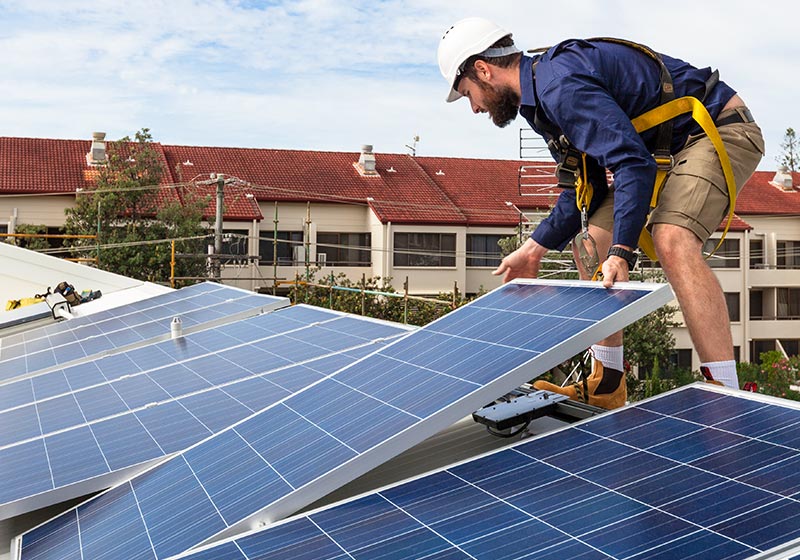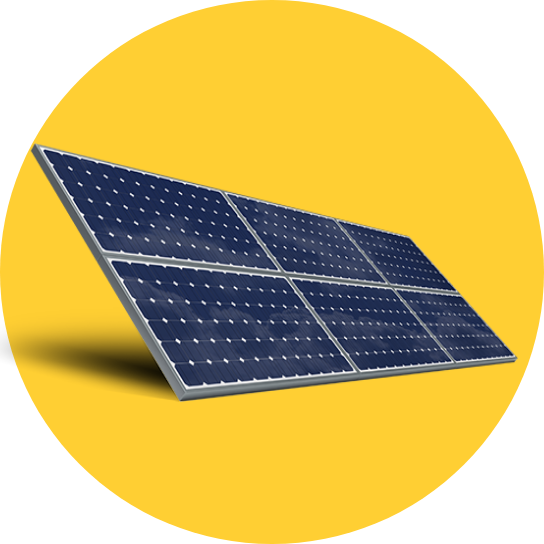
At Innolec and SEBSS, we begin with a feasibility study based on an on-site analysis and scrutiny of your power needs and past and current usage. We then prepare a comprehensive financial projection and modelling and a proposal on the recommended system’s impact. This covers considerations such as:
Our Services
- Capital outlay
- Rate of return on investment over the system’s lifetime
- We have experienced teams of Clean Energy Council (CEC) accredited installers and one of these teams will be appointed to install and commission your solar system using quality components to maximise the longevity of your system and your return on investment.
- The net present value (NPV) of the recommended system.
- Projected electricity cost savings
- Your projected payback period
- If you are happy with our proposal, we will prepare a detailed custom design and make all necessary application on your behalf to the energy wholesaler for your proposed solar system.

Commercial And Industrial Services
Power consumption is a fixed cost expense to every business. Any business investment MUST make you money or make your life easier. Installing solar does BOTH. More and more businesses are discovering just how effectively solar drives down their outgoings. With a personalised solar solution system developed by Innolec and SEBSS in place, your expenditure can be cut by up to 80% in three years, which creates a tangible saving in perpetuity for your business.
Innolec and SEBSS services businesses including supermarket and hardware chains, department stores, logistics and tech companies, manufacturing plants, together with institutions such as private schools, universities, and colleges. Even some government agencies are coming on board after seeing the savings that can be made by using solar solutions to energy problems. Contact Innolec SEBSS today on 0414 636 099 for an on-site assessment.
Off-Grid system 8 kW Victron Quattro inverter, 6.6 kW Solar panels, 24 x Eternity 4PzV220 Gel Cell Batteries.
Commercial Applications of Photovoltaic Grid Connected Systems
Medium and large industrial and commercial businesses can make effective use of photovoltaic (PV) electricity because solar generation generally matches load usage. ‘Medium’ consumers of electricity are those who use less than 275 kWh per day. The size of the selected PV system depends largely on the daily consumption.
For example, a 10 kW PV inverter system will generate, on average, 45 kWh/day with 10-20% more in summer and 10-20% less in winter.
‘Demand Charge’ Fees
Large consumers who use more than 100,000 kWh per annum must pay demand charge fees on a kW basis in addition to their kWh energy usage. This charge usually amounts to no less than $1500 per month on top of their consumption and service fees.
Photovoltaic generation can help reduce maximum demand charge (kW) as well as the energy usage (kWh). When the contribution of PV electricity reduces the annual consumption of grid electricity below 100,000 kWh the consumer can apply to change to a different kWh only tariff. This results in 40-50% reduction on energy bills.
A reasonable sized PV system is 36 kW, connected to one or two inverters. The energy generated averages 140 kWh per day depending on tilt angle and orientation.
Off Grid Photovoltaic System
‘Off grid’ solar systems for electricity generation employ a PV array, a storage battery and a stand-alone inverter. A maximum power point tracker is used to optimally charge the battery bank. The ‘off grid’ system usually incorporates a backup diesel or petrol generator.
During the day energy can be used to supply the day load and the excess energy is stored for use by the night load. Either lead acid or lithium batteries are used at a D.C. voltage of 24 V or 48 V depending on the inverter capacity. Higher D.C. voltage is preferred if the connected load exceeds 3 kW to reduce internal resistance losses.
![Solar Energy & Battery Storage Solutions [SEBSS]](https://www.sebss.com.au/wp-content/uploads/sebss.png)
